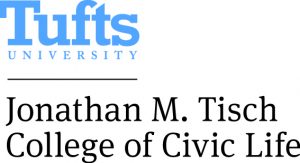Community organizing is a set of methods, practices and strategies that address public problems and also strengthen people’s capacity to work together and exercise power. It comes in many flavors, and community organizers hold diverse of views about how to do it.
Contents
Varieties of organizing and choices for organizers
What is the community? The phrase “community organizing” suggests that the locus is a community: often a geographical one, such as a neighborhood or town. In that sense, community organizing differs from labor organizing (which focuses on an employer or industry and builds a union) and social-movement organizing, which often brings distant people together around a common agenda. However, those lines can be blurred in practice. For instance, a union can be part of a community-organizing strategy, or vice-versa.
How to set the agenda? Some organizers have agendas, such as specific policies that they know they want to enact. They try to identify supporters and encourage them to vote, protest, or take other specific actions. This approach is sometimes called mobilization.
Other organizers try to bring members of a community together to discuss and choose an agenda. Their goal is to strengthen the capacity of the community to act on a range of issues. This approach is sometimes called relational organizing because of its emphasis on the relationships among people. (See The ISAIAH Trash Referendum case for a choice between those two approaches.)
Who will belong? Community organizing can bring individuals together and create a new organization that has people as members. Often, however, organizers strive to connect existing organizations in a community and convene their leaders.
In faith-based organizing, many of those groups are religious congregations, and clergy play a key role (although most faith-based community organizations also admit secular organizations).
How broadly to define the group? Some organizers attempt to convene people or organizations with a broad range of interests, concerns, perspectives, and opinions. That approach is called “broad-based” organizing. Others try to identify a “base” of people or groups who share core interests and values–perhaps those who are oppressed in a specific way.
Typical techniques
Community organizers use many tactics and methods, and new ones constantly arise. This is an illustrative short list:
- One-to-one (or “relational”) interviews. The organizers meet residents one-on-one, sometimes by knocking on doors (“canvassing”). They get to know people’s concerns and try to identify individuals who might be active, or even become leaders. They usually also share their own backgrounds and values. Typically, an interview ends with an invitation to join a larger meeting.
- House meetings (which may take place in other locations than houses): Relatively informal gatherings of people of who have been identified through canvassing and/or relational interviewing. The goal is to build relationships and social capital and to begin developing an agenda.
- Strategic discussions to select targets, tactics, demands, and rhetorical framings.
- Direct actions, such as boycotts, protests, sit-ins, and many others. (See nonviolent methods for a list of 198 of these tactics.)
Activities
- Assessing SPUD (Scale, Pluralism, Unity, Depth)Background Whether you’re building a social movement, organization, network, or media platform, you should strive for SPUD: Scale: You need a lot of people, at least relative to the size of the community that you are trying to influence. For example, to have an affect on a national election, you may need millions of participants. … Continue reading
- Asset-Based Community DevelopmentAlthough civic actors should think critically and address problems, it is also valuable to be able to identify and appreciate the existing assets of any community, no matter how disadvantaged. Lesson 8 of Longo 2023 entitled “Asset-Based Community Development,” helps to develop skills for focusing on assets in communities.
- Connecting Public Dialogue to Action and ChangeEveryday Democracy offers a workbook entitled “Connecting Public Dialogue to Action and Change.” It provides detailed guidance on “Organizing (developing a Steering Group, planning, and recruitment),” “Dialogue” (small-group discussions, sometimes called study circles)” and “Action (individual, collective, institutional, and policy changes).”
- One-to-One InterviewsA basic technique of community organizing is to conduct one-to-one interviews with members of a community to gain understanding of issues and needs, create relationships, identify people who have leadership potential, and recruit residents for group discussions and collective action. An example of a guide to one-to-one interviews is Lesson 9 of Longo 2023, available … Continue reading
- The Center for Popular Democracy’s Education Justice Campaign“The Center for Popular Democracy’s Education Justice Campaign” is a case study by Dmitri Holtzman, Ben Kirshner, and Tafadzwa Tivaringe. It “explores dilemmas that arise for a network aiming to build a multigenerational movement for education justice, particularly through the story of the Center for Popular Democracy (CPD) and the evolution of its Education Justice … Continue reading
Concepts
- Design principles for commonsElinor Ostrom and colleagues have found that communities are more likely to succeed at producing and protecting common pool resources if they employ the principles listed below (as phrased in Levine 2022, drawing on E. Ostrom 1990 and E. Ostrom 2010, 653) For the underlying theory, see this video lecture by Peter Levine on Ostrom’s … Continue reading
- Social capital“Capital” always means something of value that produces a “flow” of goods for the one(s) who own it. For instance, a factory is physical capital. It can produce manufactured products if it is supplied with trained people (human capital) and raw materials. Social capital is unique in that it is not owned by an individual … Continue reading

